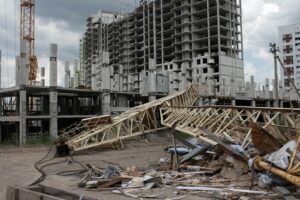The world’s largest commercial airliner was discontinued last year, but the iconic design could now pave the way to environmentally-friendlier air travel.
When Emirates received its 123rd Airbus A380 in December, it marked the end of the line for the biggest passenger plane ever built, just 16 years after launch, with new orders dwindling as a result of advances in technology making newer models more economical, and the pandemic’s devastating impact on global demand.
Now the manufacturer has announced plans to retrofit its super-jumbo, which has a capacity of 525 passengers, with hydrogen fuel technology as part of ongoing efforts to introduce the world’s first zero-emissions aircraft by 2035. The project is a partnership with CFM International – a joint venture involving General Electric division GE Aviation and Safran Aircraft Engines.
Hydrogen-powered gas turbines will be installed between the A380’s two upper level doors, with storage and distribution systems for the fuel located inside the aircraft, which was chosen for the test due to its huge size, which Airbus believes will allow it to better evolve the concept over time.
‘This is key in enabling us to achieve our ambition of having a zero-emission aircraft in commercial service by 2035,’ said Glenn Llewellyn, a leader on aviation climate strategy and VP of Zero Emission Aircraft at Airbus, in a video posted to the company’s YouTube channel.
With global air travel accounting for 915 tonnes of CO2 in 2019 alone, the pressure is on the aviation sector to perfect lower and zero-emission alternatives. Last year, it emerged that Europe’s five largest airports – London Heathrow, Paris Charles de Gaulle, Frankfurt, Amsterdam Schipol and Madrid Barajas – emitted more CO2 than the whole of Sweden.
Image credit: Daniel Eledut

















Leave a Reply